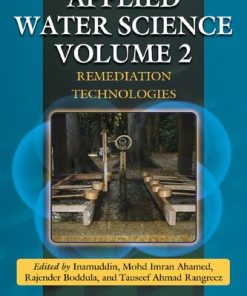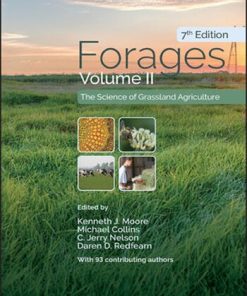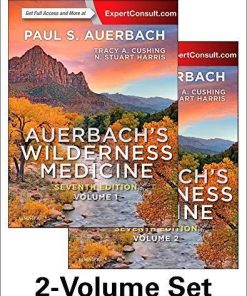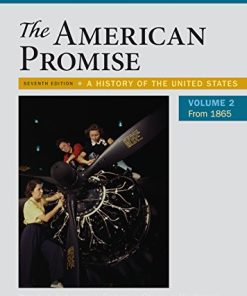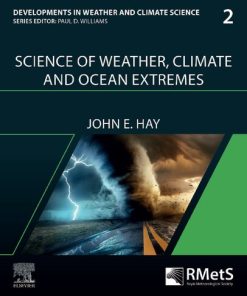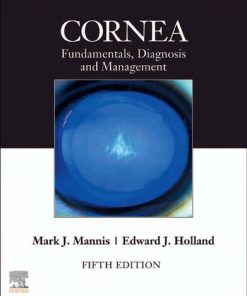Forages Volume 2 The Science of Grassland Agriculture 7th Edition by Kenneth Moore, Michael Collins, Jerry Nelson 1119436621 9781119436621
$50.00 Original price was: $50.00.$25.00Current price is: $25.00.
Forages, Volume 2: The Science of Grassland Agriculture 7th Edition by Kenneth J. Moore, Michael Collins, C. Jerry Nelson – Ebook PDF Instant Download/DeliveryISBN: 1119436621 9781119436621
Full download Forages, Volume 2: The Science of Grassland Agriculture 7th Edition after payment.

Product details:
ISBN-10 : 1119436621
ISBN-13 : 9781119436621
Author : Kenneth J. Moore, Michael Collins, C. Jerry Nelson
Agriculture professionals, forage crop and grass researchers, and animal nutrition researchers.
Forages, Volume 2: The Science of Grassland Agriculture 7th Table of contents:
PART I: FORAGE PLANTS
CHAPTER 1: Perspectives, Terminology, and Classification
Need for Consistent Terminology
Terms for Soil and Its Functions
Sustainability of Grassland Agriculture
The Role of Organic Agriculture
Classification Systems Based on Crop Use
Terms Describing Vegetation Types
Terms Describing Life Cycles and Stand Persistence
Terms Involving Biodiversity
Terms Describing Pasture and Grazing Management
Terms for Plant Nomenclature
Summary and Conclusions
References
CHAPTER 2: Grass Morphology
Introduction
Overview of Forage Grass Morphology
The Concept of a Phytomer
Structure of the Shoot Apex
Apex Size and Leaf Growth Rates
Growth of Leaves
Blade Volume and Specific Leaf Weight
Other Leaf Blade Features
Light Effects on Leaf Growth
Water Stress Effects on Leaf Growth
Tiller Production and Survival
Production and Growth of Stolons and Rhizomes
Reproductive Tillers
Root Initiation and Growth
Morphology of the Inflorescence
Morphology of Grass Seed
Summary
References
CHAPTER 3: Legume Structure and Morphology
Introduction
The Legume Family
Summary and Conclusions
References
CHAPTER 4: Carbon Metabolism in Forage Plants
Introduction
Photosynthesis and Photorespiration
Dark Respiration
High‐Temperature Stress
Low‐Temperature Stress
Water Stress
Organic Reserves in Forages
Light, Phytohormones, and Shoot Development
Managing Leaf Area and Photosynthesis
Summary and Conclusions
References
CHAPTER 5: Mineral Nutrient Acquisition and Metabolism
Nutrients Required by Forage Crops
Nutrients Required by Forage Crops
Macronutrients Required by Forage Crops
Micronutrients Required by Forage Crops
Beneficial Elements
Nutrient Uptake
Dinitrogen Fixation by Leguminous Forages
Nutrient Reserves
Nutrient Use Efficiency (NUE)
Conclusions
References
CHAPTER 6: Plant‐Water Relations in Forage Crops
Forage Plants and the Hydrologic Cycle
Water Potential and the Movement of Water Through Plants
Water‐Use Efficiency of Forage Plants
The Challenge of Improving Forage Water‐Use Efficiency
Forage Survival Under Drought
Alternative Forages for Extremely Dry Environments
Conclusion
References
CHAPTER 7: Growth and Development
Introduction
Growth and Development of Plant Organs
Describing Developmental Morphology
Quantifying Developmental Morphology
Predicting Developmental Morphology
Plant Maturity and Relationships to Forage Quality
Canopy Architecture and Tiller Demographics
References
PART II: FORAGE ECOLOGY
CHAPTER 8: Climate, Climate‐Change and Forage Adaptation
Earths Energy Balance Affects Climate
Status of Climate Classification Systems
Climate and Forage Species Distribution
Plant Adaptation
Role of Management to Improve Plant Adaptation
Climate Change
Summary and Conclusion
References
CHAPTER 9: Plant Interactions
Overview
Plant‐Plant Interactions
Plant‐Microbial Interactions
Summary
References
CHAPTER 10: Plant‐Herbivore Interactions
Nature and Complexity of Grassland‐Herbivore Interactions
Scales of Grassland‐Herbivore Interactions
Importance of Intake and Components of Intake in Grazed Grasslands
Grassland Characteristics Affect Animal Response
Animal Grazing Behavior Affects Grassland Response
Modeling Grassland‐Herbivore Interactions
Optimizing Grassland‐Herbivore Interactions
References
CHAPTER 11: Nutrient Cycling in Forage Production Systems
Introduction – The Systems Approach to Nutrient Cycles
Why Does Nitrogen Frequently Limit Forage Production?
Nitrogen in the Plant‐Soil System
Legumes and N2 Fixation
Nitrogen in the Plant‐Soil‐Grazer System
Phosphorus Cycling in Forage System
The Challenge of “Balancing” Nutrient Budgets
References
CHAPTER 12: Forages for Conservation and Improved Soil Quality
Overview
Forages Reduce Water and Wind Erosion
Forages Improve Soil Properties
Selecting Forages for a Management Goal
Landscape Effects of Forages on Soil
Sound Management Maximizes Soil Conservation Benefits
References
CHAPTER 13: Forages and the Environment
Ecosystem Services from Forage and Grasslands
Managing for Multiple Ecosystem Services
Tradeoffs and Synergies in Realizing Multiple Ecosystem Services
Summary
References
PART III: FORAGE SPECIES
CHAPTER 14: Cool‐Season Legumes for Humid Areas
Introduction
Common Traits
Adaptation
Medicago
Trifolium
Lotus
Other Temperate Legumes
Miscellaneous Legumes
References
CHAPTER 15: Legumes for Tropical and Subtropical Areas
Introduction
Tropical Legume Forage Characteristics
Tropical Legume Germplasm
Tropical Legume Genera and Species
Commercial Use
Summary and Conclusions
References
CHAPTER 16: Cool‐Season Grasses for Humid Areas
Introduction
The Fescues
The Ryegrasses
Orchardgrass
The Bromegrasses
Timothy
Reed Canarygrass
The Bluegrasses
Summary
Acknowledgment
References
CHAPTER 17: Grasses for Arid and Semiarid Areas
Cool‐Season Grasses
Warm‐Season Grasses
References
CHAPTER 18: Warm‐Season Grasses for Humid Areas
Importance, Adaptation, and Use in Production Systems
Characteristics
Management and Utilization
Perennial Grasses
Annual Grasses
References
CHAPTER 19: Forbs and Browse Species
Introduction
Forbs
Brassicas
Chicory
Plantain
Other Forbs
Browse
Summary
References
PART IV: FORAGE SYSTEMS
CHAPTER 20: Systems for Temperate Humid Areas
Introduction
Important Livestock Classes
Important Forage Species
Forage Livestock Systems for Dairy Cattle
Forage Systems for Beef Cattle
Emerging Forage Livestock Systems
Ecosystem Services of Forages in Temperate Regions
Summary
References
CHAPTER 21: Forage Systems for the Temperate Subhumid and Semiarid Areas
Introduction
Important Forage Species
Forage Systems
Challenges for Future Forage Systems
Summary
References
CHAPTER 22: Systems for the Warm Humid Areas
Introduction
Environmental Factors Limiting Regional Forage Options
Important Forage Species
Important Livestock Classes
Forage‐Livestock Systems
Environmental Impacts of Forage Management
References
CHAPTER 23: Systems for Humid Transition Areas
Introduction
Important Forage Species
Important Livestock Classes for the Region
Integrated Crop‐Livestock Systems
Challenges and Opportunities
Summary
References
CHAPTER 24: Forage Systems for Arid Areas
Introduction
History
Forage Systems in Arid Zones
Rainfed Range‐Beef Systems
Western Dairy Systems
Irrigated Forage Crops
Irrigated Pasture
Exports of Hay
Challenges and Opportunities in Western Forage Systems
References
PART V: FORAGE PRODUCTION AND MANAGEMENT
CHAPTER 25: Forage Establishment and Renovation
Preparing for Successful Establishment
Establishing from Seed
Seeding Method Dictated by Soil Preparation
Establishing from Vegetation (Sprigging)
Renovating and Planting into Existing Forage Stands
No‐Tilling Annuals into Pastures
No‐Tilling Cool‐Season Species into Warm‐Season Species
Management of New Seedings
References
CHAPTER 26: Fertilization and Nutrient Management
Soil Fertility and Soil Health
Soil Sampling
Interpretation of Test Results
Environmental Impacts of Nitrogen and Phosphorus
Nutrient Removal with Pasture vs Hay Production
Nutrient Cycles
Soil pH, Acidity, Alkalinity, and Salinity
Sulfur
Micronutrients
References
CHAPTER 27: Irrigation and Water Management
Need and Extent of Forage Irrigation
Sources of Water
Forage Water Use
Irrigation Methods and Efficiencies
Forage Responses to Irrigation
Irrigation, Soil Fertility, and Yield Relationships
Irrigation Scheduling
Soil Salinity
Drainage of Soils
Other Irrigation Considerations
Summary
References
CHAPTER 28: Weed Management
Introduction
Setting Goals and Objectives
Desired Plant Community
Site Assessment
Biology and Ecology of Key Species
Weed Management Strategies
Integrated Weed Management
Adaptive Management
References
CHAPTER 29: Insect Management
Introduction
Ecologic Intensification Using Insects in Forage Systems
Management Concept for Insect Pests
Arthropod Pests of Forages and Plant Injury
Components of Insect Damage
Steps to Managing Insect Pests in Forages
Looking to the Future
References
PART VI: FORAGE IMPROVEMENT
CHAPTER 30: Forage Breeding
Introduction
Breeding Objectives
Mode of Reproduction
Germplasm
Breeding Systems and Methods
Selection, Testing, and Cultivar Development
Summary, Needs, and Future Outlook
References
CHAPTER 31: Biotechnology and Molecular Approaches to Forage Improvement
Introduction
Basic Genetics
Genomes and Ploidy
Breeding with Genetic Markers
Genetic Transformation and Gene Editing
Potentials and Limitations of Biotechnology
Discussion of Costs and Benefits of Biotechnology and Molecular Markers
Summary
References
CHAPTER 32: Seed Production
Introduction
Regional Seed Production in North America
Environmental Variability and Seed Quality
Specialized Management for Reproduction and Quality
References
PART VII: FORAGE QUALITY
CHAPTER 33: Carbohydrate and Protein Nutritional Chemistry of Forages
Introduction
Forage Protein
Carbohydrates
Forage Cell Walls
Summary
References
CHAPTER 34: Digestibility and Intake
Introduction
Digestive Adaptations of Herbivores
Ingestive Adaptations of Herbivores
Digestive Processes
Determining Digestibility
Lucas Test of Nutritional Uniformity
Conceptual Description of Digestibility
Estimation of Digestibility Using Summative Equations
Digestion Kinetics
Factors Affecting Forage Digestibility
Importance of Intake in Assessing Forage Quality
Concepts of Intake Regulation
Measuring the Intake Potential of Forages
Factors Affecting Intake
Predicting Intake Potential Using Forage Characteristics
Animal Management Environment and Chewing Response
Summary
List of Abbreviations
References
CHAPTER 35: Plant Chemistry and Antiquality Components in Forage
Introduction
Polyphenols
Phytoestrogens
Cyanogenic Glucosides
Alkaloids
Amino Acids
Summary and Conclusions
References
CHAPTER 36: Laboratory Methods for Evaluating Forage Quality
Sampling Methods
Sample Processing
Chemical Analyses
Physical Measurements
Quality Measurements Unique to Corn Silage
Near Infrared Reflectance Spectroscopy
In Vitro Methods
References
CHAPTER 37: Animal Methods for Evaluating Forage Quality
Direct Measurement of Livestock Performance
Diet Selection
Forage Intake
Rate and Extent of Digestion
Balance Trials
Metabolic Indicators
Conclusion
References
CHAPTER 38: Predicting Forage Quality
Introduction
Evolution of Forage Quality and Definitions
Crude Protein
Predicted Values
Tools and the Digital Age
Bias and Accuracy
Conclusion
References
CHAPTER 39: Factors Affecting Forage Quality
Forage Consumed
Morphology
Anatomy
Cellular Composition and Metabolism
Biodiversity and Genetics
Environment
Management Implications
Summary and Conclusions
References
PART VIII: FORAGE HARVESTING AND UTILIZATION
CHAPTER 40: Post‐Harvest Physiology
Introduction
Pre‐Harvest Physiologic Status of Forage Plants
Field Drying of Forages
Rain Damage
Hay Storage
Silage Storage
Summary
References
CHAPTER 41: Hay Harvest and Storage
Introduction
Cutting
Conditioning
Swath Manipulation
Baling and Handling
Storage
High‐Moisture Hay Preservation
Production Systems
References
CHAPTER 42: Silage Production
Ensiling
Crop Factors Influencing Ensiling
Harvesting Issues
Silo Types
Storage/Feeding Management Issues
Additives
Troubleshooting
References
CHAPTER 43: Biomass, Energy, and Industrial Uses of Forages
Introduction
Forage Species for Biofuels
Management for Bioenergy Cropping
Use of Conservation Lands for Feedstock Production
Life Cycle Assessment
Bioenergy Conversion
Other Industrial Products from Forages
Summary
References
PART IX: PASTURE MANAGEMENT
CHAPTER 44: Pasture Design and Grazing Management
Importance of Grazing Management and Pasture Design
Defoliation and Plant Response
Grazing Management Choices
Pasture Design in Grazing Systems
Factors Affecting Choice of Grazing Management
References
CHAPTER 45: Grazing Animal Nutrition
What Makes Grazing Animals Unique?
Symbiosis of the Grazing Animal and Enteric Microflora
What Nutrients Do Grazing Livestock Require?
Nutritional Requirements During the Production Cycle
Matching Animal Requirements to the Forage Resource
Devising Supplements for Grazing Animals
Species Differences in Relation to Environmental Conditions and Forage Utilization
Summary
References
CHAPTER 46: Grazing Animal Behavior
Overview
Diet Selection Based on Digestive Consequences
Plant Attributes that Influence Digestive Consequences
Selection and Rejection of Patches of Feeding Stations
Foraging Strategies and Ingestive Behavior
Social Interactions Affecting Selection of Feeding Areas
Visual Cues and Spatial Memory Affecting Grazing Behavior
Temporal Aspects of Grazing Behavior
Conclusions and Management Applications
References
CHAPTER 47: Forage‐Induced Animal Disorders
Pasture Bloat
Pasture Bloat
Milk Fever
Grass Tetany – Hypomagnesemia
Laminitis – Lameness
Nitrate Poisoning
Mineral Elements: Deficiency, Toxicity, and Interactions
Natural Toxicants in Forages
Other Health Problems
Animal Metabolism of Plant Toxins
References
CHAPTER 48: Grazing Systems and Strategies
Grazing Systems, Methods, and Tactics
Grazing Resources
Forage–Livestock Systems
Integrated Production Systems
Summary
Acknowledgment
References
Common and Scientific Names of Forages
People also search for Forages, Volume 2: The Science of Grassland Agriculture 7th:
what was the fall of the roman republic
what factors contributed to the fall of the roman republic
social conflicts in the roman republic
roman conflict of the orders
roman conflict
Tags:
Forages,The Science,Grassland Agriculture,Kenneth Moore,Michael Collins, Jerry Nelson
You may also like…
Biology and other natural sciences - Plants: Agriculture and Forestry
Forages, Volume 2: The Science of Grassland Agriculture Kenneth J. Moore (Editor)
History & Research
Medicine & Health Science
Auerbachu2019s Wilderness Medicine, 2-Volume Set 7th Edition
Science (General)
Medicine - Ophthalmology




